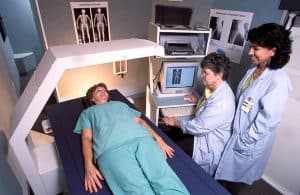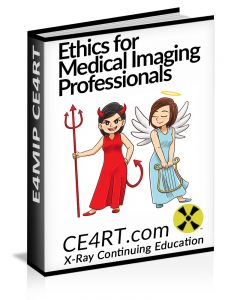Communicating Radiation Risk to Patients
Radiologic technologists play an important role in communicating radiation risk to patients. To this end, they must establish a rapport with the patient. One of the major challenges of risk communication is the difference in risk perception by healthcare professionals and the general public. To effectively communicate the risks and benefits of radiation exposure, radiographers need to understand this difference themselves. It is also important to remember that the general public may have obtained information from non-technical sources such as newspapers, magazines, TV shows, and Internet sites. Moreover, the layperson is prone to give equal importance to information from unverified sources and scientific bodies.
Guidelines for Communicating Radiation Risk
It is worth remembering that the radiation risk dialogue is conducted with a person who is under a great deal of stress and may be confused. This is especially true when communicating radiation risk before pediatric imaging. Negative information while communicating radiation risk typically has a greater impact than positive information. Distrust can lead to the person ignoring or “not hearing” what they are told. With this in mind, radiologic technologists should keep the following points in mind when communicating radiation risk:
- Be honest.
- Avoid using absolute terms such as “always” and “never”.
- Don’t use medical jargon.
- Use positive or neutral statements whenever possible rather than negative terms.
- Use examples, analogies, and metaphors to clarify what you’re communicating.
- Do not assume you have been understood while communicating radiation risk.
- Remain calm.
- Do not make promises you are not certain about.
- Do not speculate.
- Separate risk and benefit statements.
- Compare related risks from trusted sources.
- Do not attack a person/organization/ website that is the source of incorrect information.
Risk Comparison
In terms of comparison while communicating radiation risk, it is a good idea to compare the same risk under different circumstances, compare the risk to an easily understood standard, or compare the same risk with different estimates. A good approach is to compare the risk of radiation exposure from an examination to the exposure from natural background radiation. For example, the exposure from a chest PA radiograph is 0.1 mSv which is roughly equal to one and a half weeks of natural background radiation. The radiation exposure from a chest CT is 7 mSv which is roughly equal to 2 years of natural background radiation (assuming that the average background exposure is 3 mSv per year). Other appropriate comparisons include risk of cancer from radiation versus risk from smoking or other known carcinogens.
In addition to communicating radiation risk, the benefits of an examination and the risks of not undergoing it need to be communicated. Risks of not undergoing an exam include a missed diagnosis or delay in treatment with a potential reduction in life expectancy. Moreover, the latency period of radiation-induced cancer must be considered and communicated in relation to the patient’s age.
X-ray CE
Browse through our range of e-courses for X-ray continuing education. Our courses on our website are category A credits and are accepted by ARRT®, ARDMS, SDMS, NMTCB, and state registries in the US and Canadian Provinces. Our low-cost CE for X-ray techs allows you to complete your biannual requirements without burning a hole in your pocket. Read the FAQs section for commonly asked questions. Get started right away and get your CE done and dusted!
Know more about arrt® ce credits online here.

